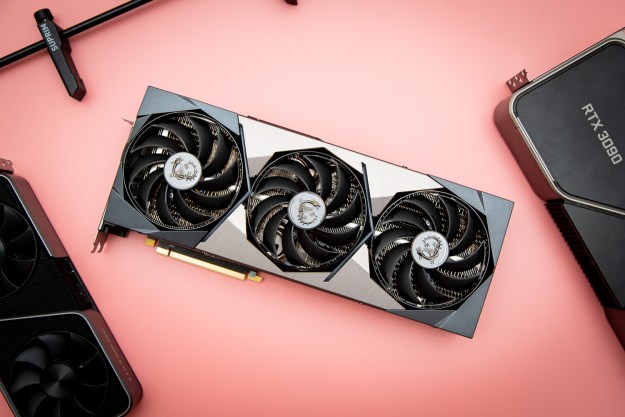UL Benchmarks confirmed to Digital Trends that it’s currently working on an entirely new 3DMark benchmark targeting Nvidia’s GeForce RTX 20 graphics card family. Based on DirectX Ray Tracing, it will support the real-time ray tracing features embedded in Nvidia’s Turing-based RTX GPUs. The new benchmark could arrive around the time Microsoft’s October 2018 Update lands for Windows 10.
To bring you up to speed, Futuremark became a part of Underwriters Laboratories, or simply UL, in 2014. The partnership would bring a higher stream of revenue along with UL’s marketing resources, quality assurance and lab facilities. Futuremark then changed its name to UL Benchmarks in April to better integrate into the parent company’s highly valued brand and “explore new opportunities for benchmarking and related services.”
Meanwhile, Nvidia introduced a new family of graphics cards on Monday that supports real-time ray tracing: The GeForce RTX 20 Series. Nvidia CEO Jensen Huang spent the entire press conference discussing the new family’s ray tracing capabilities, such as talking about how one card performs more GigaRays per second than the previous generation. Huang even admitted that you now need to take a different approach in reporting performance numbers.
Right now, there is no real way to gauge how these cards perform off-stage. A recent video of the $1,000 GeForce RTX 2080 Ti running Shadow of the Tomb Raider even stirred some controversy because it was running the game between 30 and 70 frames per second at a 1,920 x 1,080 resolution while ray tracing was turned on. The developers fired back, saying
Ray tracing is an important step in bringing photo-realistic visuals to gaming. Hollywood uses
The GeForce RTX 20 Series includes cores dedicated to ray tracing, but also cores dedicated to artificial intelligence. What the RT Cores can’t render in real time are “filled” by the Tensor Cores to complete each frame. Based on Nvidia’s presentation, neural networks will create this necessary data that will be included in drivers and made accessible to these artificial intelligence-dedicated cores.
Again, there is currently no benchmark to fully test this process on Nvidia’s new graphics chips. A representative for UL previously said the new 3DMark benchmark would “align with the launch of Redstone 5,” which is Microsoft’s code name for Windows 10 1809, aka the October 2018 Update. So far there’s no confirmed release date for Redstone 5.
Meanwhile, Nvidia’s RTX 2080 arrives on September 20 for a starting price of $800 along with the RTX 2080 Ti with a starting price of $1,000. The RTX 2070 will follow sometime thereafter with a starting price of $500 while Nvidia didn’t mention the RTX 2060 during Monday’s presentation. Rumor points to October 30 as the RTX 2060’s potential release date.
Editors' Recommendations
- Nvidia RTX 50-series graphics cards: news, release date, price, and more
- Nvidia RTX 4050 impresses in first benchmark leak
- Nvidia’s DLSS 3 could make the monstrous RTX 4090 a little less power hungry
- Nvidia’s RTX 4090 breaks all limits in a leaked benchmark
- New report claims that Nvidia may leave AMD in the dust


